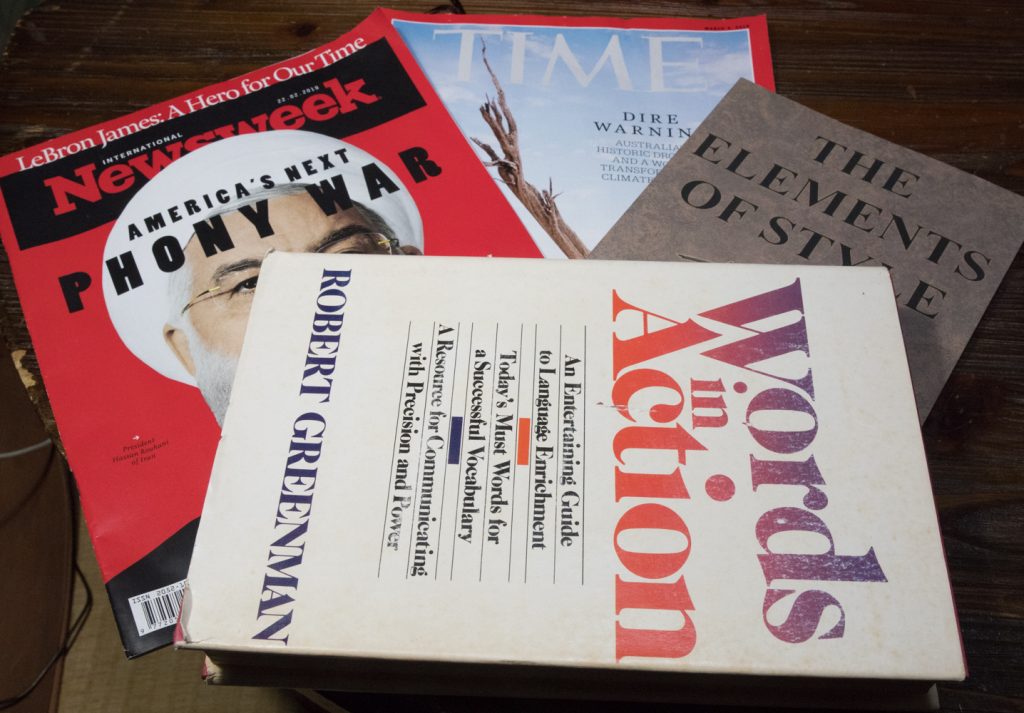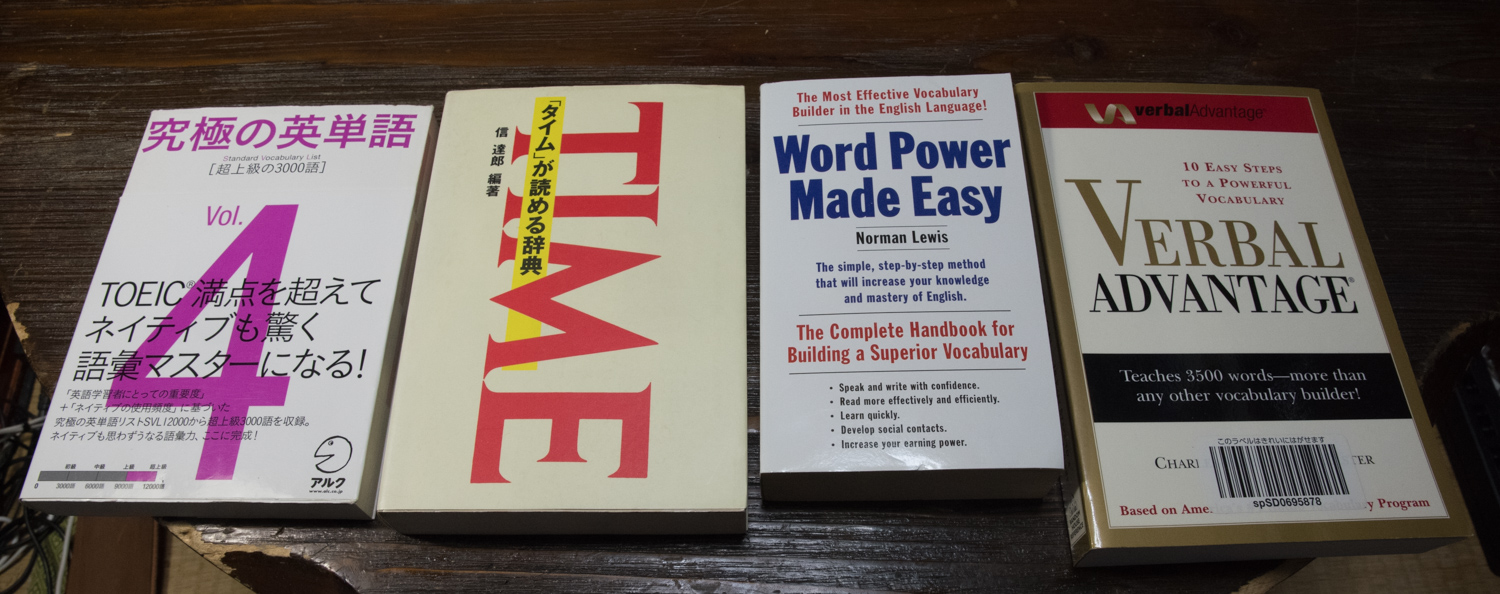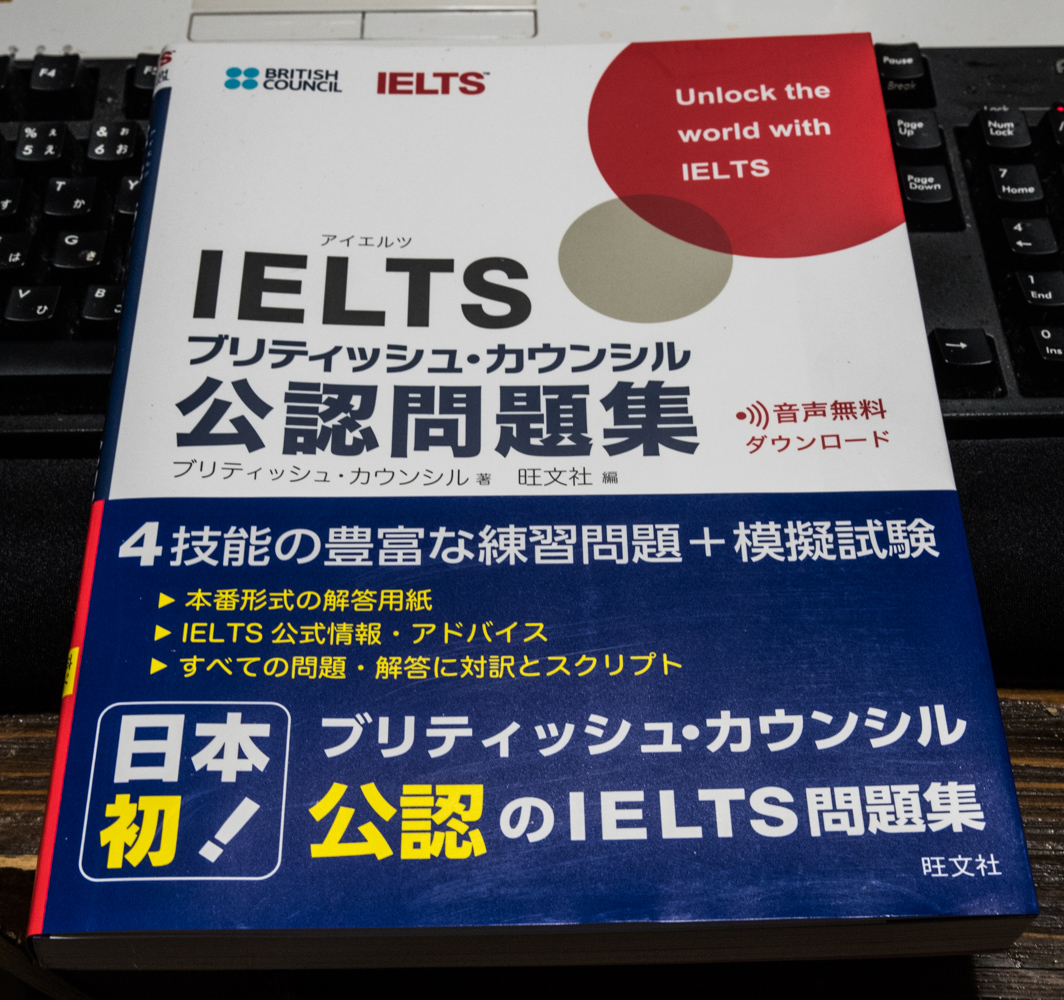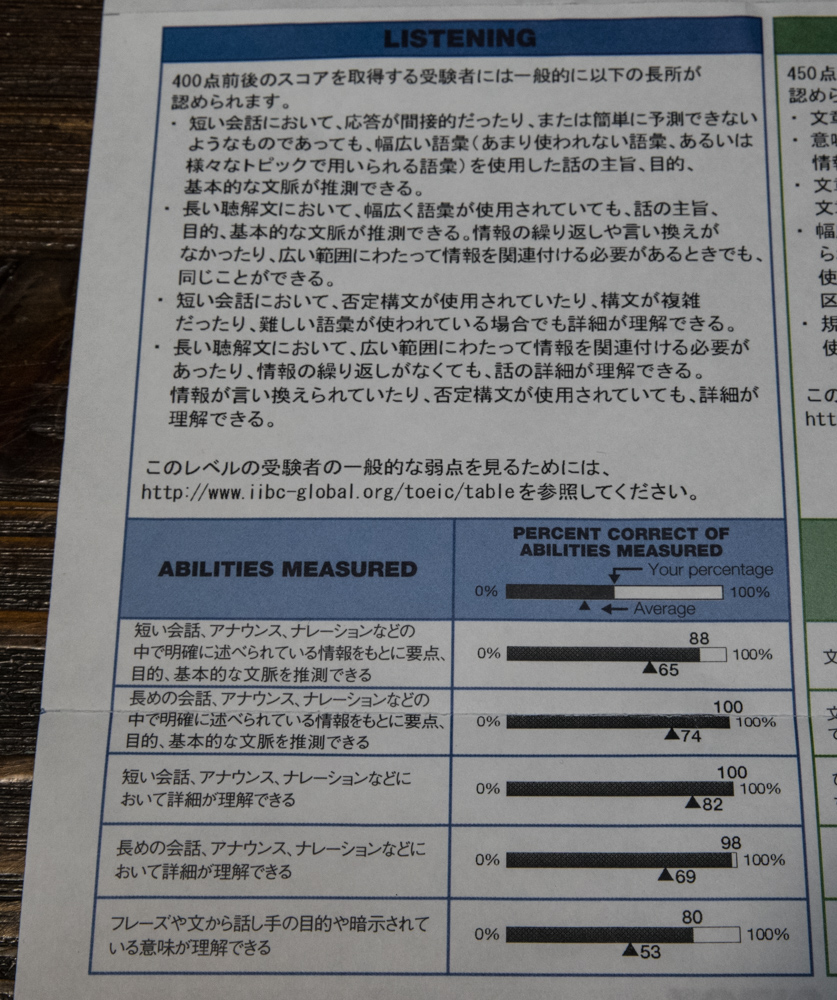 例の英語の「同じ単語を一つの文章の中で繰り返さない」という暗黙のルールですが、ネットで調べた限りでは、このルールは元々フランス語のもののようです。ご承知の通り、中世ではイギリスとフランスは同じ王によって治められ、多数のフランス語の語彙が英語に流入している訳ですが、当然上流階級が話す言葉がフランス語であれば、英語にもフランス語の慣習が持ち込まれても何の不思議もありません。
例の英語の「同じ単語を一つの文章の中で繰り返さない」という暗黙のルールですが、ネットで調べた限りでは、このルールは元々フランス語のもののようです。ご承知の通り、中世ではイギリスとフランスは同じ王によって治められ、多数のフランス語の語彙が英語に流入している訳ですが、当然上流階級が話す言葉がフランス語であれば、英語にもフランス語の慣習が持ち込まれても何の不思議もありません。
つまりこのルールには最初から一種の鼻持ちならない階級意識みたいなものが随伴していると言えそうです。
他のイタリア語やドイツ語などでは、相手の疑問文中に出てくる単語を、答えの中では代名詞で置き換えるというのは非常によくあります。ですが、英語みたいに名詞を同じ意味の名詞で置き換えるなんてことは、私の知る限りほとんど出てこないですし、ドイツ語で卒論を書いた時にもドイツ人教師(複数)からそういう指導は一切ありませんでした。またドイツ語やイタリア語では名詞に性があり、代名詞もその性に合わせて語形が決まり、どの単語を指しているかの判定が比較的容易です。しかし英語の場合は人間を指している場合を除いて、名詞の性は明確ではないので、代名詞による判定は簡単ではありません。(例外的に、例えば船については女性扱いでsheで受けるとかありますが。原子力潜水艦シービュー号でも、シービュー号は常にshe/herと女性扱いで参照されています。例えばTake her up!は潜水艦を浮上させろ、という意味です。)
Eigoxの先生に聞いた所によると、通常の生活で使う語彙は高校までに習得するもので十分で、TimeやNewsweekやNew York Timesで使われる日常ではまず見ない奇妙な語彙は、基本的に大学に入る上でマスターしないといけないということみたいです。なのでネイティブも私が買ったような語彙増強本を買って必死に勉強して、やっとこれらの雑誌や新聞の語彙が理解出来るようになる訳です。私が何度も経験したのは、この手の雑誌や新聞に出てくる聞いたこともないような単語を辞書で調べてみると、多くは単純な意味に過ぎず他の単語で表現することが可能です。にも関わらずそういう語彙を使う一つの大きな理由として、この「同一単語の繰り返しを嫌う」慣習から来ているケースが多いということです。これらの語彙を知っているのは「大学で学んだインテリの証拠」ということになり、ここにもまたある種の特権意識が見られます。
私は「同じ単語を繰り返さない」というルールについては、メリットとしては、微妙な意味合いを持つ概念を複数の言葉で描写して、その意味を分かりやすくさせる、小説などで読者を退屈させないようにする、ぐらいしか見つけられません。逆にデメリットは沢山あり、まず契約書や技術的文書のような曖昧さを嫌う文書ではまず適用出来ないというのが挙げられます。また言うまでもなく、文章の意味を曖昧にしかつ意味が明確に伝わるのを邪魔します。更には文章を書くのに余計な時間がかかります。(英語のシソーラスはほとんどこの目的で使われていると言っても言い過ぎではないと思います。)私はウィリアム・ストランク・Jrの”The Elements of Style”を持っていますが、このライティングの古典的教科書が言っていることは、「簡潔で、明確で、力強い文章を書きなさい」ということで、同単語反復禁止ルールはまさにその反対のことをやることだと思います。
カテゴリー: English
英単語の語彙力について

英単語の語彙力について。色々な方法でチェックした結果では、私の現在の英単語の知識は大体9,000語と10,000語の間ぐらいだと思います。一方でTimeやNewsweek、あるいはNew York Timesなどのインテリ向け記事の単語は20,000語以上が使われていると良く言われています。では、単語力が20,000語以上無いとこれらの記事が読めないか、というとそんなことはないです。(もちろん単語力が高い方がいいに決まっていますが。)ここ2年くらいNewsweekやTimeを読んできて分かったことは、何故日常会話などではまったく使われない奇妙な単語が出てくるかというと、その一つの大きな理由は例の「同じ単語の繰り返しを避ける」という、私から見たらある意味馬鹿げた一種の強迫観念から来ていると思います。要するに最初に出てきたごく普通の単語を2回目以降に言う時に、その単語とほぼ同じ意味の別の単語を使いますが、その時にシソーラスを見てわざと難しい単語を選んでいるんではないかと。この場合、最初に出てくる単語の意味さえ分かれば、2回目以降は「ああ言い換えているんだな」と思えば良く、一々辞書を引かなくても問題はありません。
大体このレベルの単語はネイティブでも知らない人は結構いて、要するに大学入試用とかで覚えているみたいです。写真の右2冊はネイティブが自分の語彙を増やしたい時に読む本です。私はこれらの本を買いそろえましたが、結局単語だけ覚えるというのはある意味効率が悪いので、まだほとんど読んでいません。
How do you feel about legalized gambling?
The following essay is what I wrote as an assignment of English writing course at an English school AEON:
Topic: How do you feel about legalized gambling?
Style: Formal
Gambling in general is illegal in Japan as stated in the article 185 of the Japanese penal law. There are, however, so many special laws that define some types of special gambling as legal. Among them, there are keiba (horse race), keirin (bicycle race), kyoutei (boat race), auto-race (motorbike race), and some lotteries such as takara-kuji or TOTO. In addition to those, a popular type of gambling called pachinko and pachi-slot still exists. By playing pachinko or pachi-slot, you can get money. Although there have been a lot of controversies whether pachinko and pachi-slot are legal or not, they are allegedly legal recently.
What is most surprising is the amount of sales for each type of legal gambling. Among all leisure industries in Japan, pachinko and pachi-slot occupy 30.5% of money spent, namely 21,626 Billion JPY ($197 Billion) in 2017. The sales of all other legal gambling was around 4 Trillion JPY ($36 Billion) in 2015. Although other gambling sales are just 20% of those of pachinko and pachi-slot, the incomes are crucial for many local governments in Japan. While there are a lot of negative things about gambling, legal gambling is practically a necessary evil in Japan.
If we play devil’s advocate, there might be some positive factors in gambling. In gambling, we can learn how our fortune goes or flows in relation with your counterparts. If we can gamble just when we are lucky and can stop it when we are not, it will bring big success. Do not forget the Cicero’s words: “Non solum fortuna ipsa est caeca sed etiam eos caecos facit quos semper adjuvat.” (Not only the goddess of fortune is blind, but she makes him also blind whom she always helps).
Now that the Japanese government is trying to install casinos around Japan, this topic is quite viral and controversial. We can see not only people in serious gambling addiction, but also Japan itself relies too much on income from gambling. For what is Japan profited, if it shall gain the whole world, and lose its own soul?
IELTS受験を決めました。
 TOEICのスピーキングテストについて評価の正確さに大いに疑問を持ち、それに変わるより良い試験がないか色々調べて、アルクがやっているSSTというのが対面式(人間相手にしゃべる)で良さそうだったのですが、これは残念ながら団体受験専用でした。個人も受験可能なTSSTというのもあるのですが、それは電話でしゃべるものです。
TOEICのスピーキングテストについて評価の正確さに大いに疑問を持ち、それに変わるより良い試験がないか色々調べて、アルクがやっているSSTというのが対面式(人間相手にしゃべる)で良さそうだったのですが、これは残念ながら団体受験専用でした。個人も受験可能なTSSTというのもあるのですが、それは電話でしゃべるものです。
それからTOEFLのスピーキングは、問題形式がほぼTOEICのスピーキングと同じで受ける意味が無いと思いました。
で結局、IELTS(アイエルツ)というブリティッシュ・カウンシルがやっているテストを受けることにしました。ただ、スピーキングだけはなく、4技能すべての同時受験です。この試験のスピーキングがいいのは、個室の中での人間の試験官との対話で試験されるということです。変な制限時間はありませんし、問題が聴き取れなければもう一度しゃべってもらうよう頼むことも出来るようです。
ただ問題は、試験の実施回数が少なくて、結局今申し込んだら横浜の試験会場ではようやく取れたのが5月11日のでした。また料金も税込みで¥25,380とかなり高いです。更には本人認証として使えるのはパスポートのみであり、その画像をアップロードして登録しないといけません。結果は4技能それぞれ、レベル0から9までのバンドスコアで出ます。私のTOIEC L&Rレベルだと、目標は7~7.5です。
まあ、まだ時間はあるからゆっくり対策を立てます。
ちなみにAEONの先生にもより良いスピーキングテストがないか相談しましたが、その先生のお勧めもIELTSで私の選択と一致しました。
いわゆるPros&ConsでIELTSを評価すると、
良い点(Pros)は、
(1)スピーキングのテストがマンツーマンの対面式である。
(2)4技能を同日に試験。(時に2日の場合もあり。)
(3)TOEICの最高スコア990はIELTSでは9が最高に対して7.5に過ぎず、上級者の英語力の進歩をきちんと測定出来る。
(4)結果によって、イギリスの大学への留学の場合などの英語力の資格証明になる。(TOEICは昔は認められていましたが、今は外されました。)
だと思います。
悪い点(Cons)は
(1)実施場所と回数がTOEICに比べはるかに少ない。思い立ってもすぐ受験出来ない。
(2)拘束時間が長い。最長で朝8:30ぐらいから19:30までの可能性有り。(試験時間そのものは2時間40分ぐらい)
(3)料金が高い。25,350円もする。
です。
後は受けてみないと分かりません。
TOEIC L&R 237回の成績通知とリスニングが満点になった推定理由

TOEIC 237回の正式な成績通知が今日届きました。でリスニングは今回初めて495点の満点だったんですが、各パートの正解率を見る限り、何でこれで495点が取れたのか非常に不思議です。おそらく100問の内の正解数はせいぜい95~96問ぐらいだ思います。それで満点となる理由ですが、
(1)最近のリスニングは高得点者を少なくするために、一部で異常に難しい問題が混ぜられている。しかしそれを単純な正答率で点を付けると、過去のそれほど難しくなかった時の試験との整合性が取れなくなる。なので単純な正解率の平均によって調整が行われ、100%の正答率ではなくても満点になる。
(2)今回のパート2で3択の選択肢のどれが正解かほとんど判断できない問題が確実に2問ありました。(私が受けたバージョンは、パート1の写真にコインランドリーみたいなのがあったものです。)リスニングについてはここ数年最低毎日90分は英語を聴いていますから、問題が聴き取れないということはほとんどありません。しかしこの2問については聴き取れたとしても、選択肢でどれを選ぶべきかが非常に曖昧でした。おそらくこの2問はあまりに正解率が低かったので採点から除外されたのではないかと思います。この2問を除けば、後間違えたのが2問くらいなら十分満点の可能性はあります。
ということで、先日S&Wのおかしさ満点の採点について疑問を呈しましたが、L&Rはそれよりはましとはいえ、何かとても変なテストになってきているように思います。
School trips
The following is my essay that I wrote as an assignment for an English school AEON:
Topic: School trips
Style: Casual
I like travelling, but I am not a fan of school trip in general. The biggest reason is cost. The average amount of a school trip in junior high schools in Japan is around 63,000 Yen ($600), while that a high school trip is around 100,000 Yen ($910). They are rather fair amount of money, and in public schools, there are some students who cannot join a school trip because their parents cannot afford it.
Secondly, it is almost annoying for me to see many students in the same uniform (usually all black) in some famous sight-seeing spots. Students are not soldiers, so I do not understand why schools train them to act in the same way even outside the schools.
Such students who experienced school trips, may choose packaged tours when they want to visit foreign countries even after they started to work. I have many experiences of travelling in foreign countries both on business and in private, but I have never ever used such package tours. Planning and arranging a trip is one of the essential parts of a travel, IMHO. For example, when I travelled to Italy in May in 2018, I first tried to book the flights by comparing charges of different flight companies. Then I booked an opera at the theater Scala in Milan, which was the biggest purpose of the trip. I also booked tours to some famous museums in Italy. Then I booked inland transportation, both a flight and trains. I booked trains at the TRENITALLIA’s site. Finally, I booked hotels on the Internet using a service of called booking.com. All these tasks are important parts of a travel for me, and I do not want to leave them to others.
Travelling in a big group may lessen the chance to communicate with local people and to use local languages.
I would like to suggest schools in Japan to adopt a new way of travelling for their students: to let their students travel alone. The budget for the trip is predetermined. Students must select some appropriate ways of transportation within the budget by themselves. They also select the destinations by themselves as well. After they have finished their travels, they should write a report for the trip they planned by themselves. In a Japanese saying, it goes that “let your lovely child travel”.
TOEIC S&Wの結果と採点に関する疑問
TOEICのS&Wの結果、3連休の後の発表かと思ったら、本日発表されました。結果、スピーキングが-10点の140点、ライティングが-20点の150点で前回よりも30点も下がってしまいました。
この結果はまったくもって納得出来ません。スピーキングに関しては、前回より今回の方がはるかに出来が良かったですし、そのための練習も前回受けた後かなりやっています。またライティングに関しても前回同等以上の感触でした。
前回は低い点にがっかりしましたが、今回はむしろ腹が立ちました。明らかに点数の再現性・客観性がおかしいと思います。調べてみたら、採点するのは一人の試験官であり、一応採点基準はありますが、決して客観的に決められるようなものではなく、おそらく採点者によるバラツキが大きいのだと思います。(たとえばスポーツの採点みたいに、複数の人間で評価し、最高評価と最低評価を斬り捨て、残りを平均する、なんてことはまずあり得ないと思います。)また受験者も少ないので、採点データとしても多くなく、各採点者の採点レベルの客観性なんてチェックされていないのではないかと思います。
実際に長く海外在住で、奥さんはネイティブなので家でも英語しゃべっていて、仕事でエンジニアのチームのリーダーをやり、また翻訳の仕事をやっている人が、一時帰国した時にS&Wを受けて、点が非常に低かった、という書き込みを見つけました。
念のため、週3回やっているEigoxでの評価はスピーキングに関してはほとんど10段階の8(10が最高でネイティブ上級、9がネイティブ中級、8がネイティブ初級、7がネイティブ入門クラス)です。(スピーキングという意味ではEigox以外に週一回AEONに通ってそこでもディスカッションコースでしゃべっています。つまり週4回です。)
今後の方針としては、
(1)TOEICのスピーキング以外のスピーキングテストを受けてみて、それでどう評価されるかを見る。
(2)TOEICのS&Wの採点基準に特化した話し方、書き方を練習する。
が考えられますが、(2)は本来の目的の英語力の向上という意味では、ある意味不毛で、TOEIC S&Wというほとんど世の中には知られていないテストで高得点を取るためにそんな勉強をするのは時間の浪費と思います。
それから大学受験での英語4技能試験のために、TOEICを使うのって大いに疑問です。L&Rはまだしも、S&Wはそもそも受けている人が非常に少なくてそのため問題の改善もほとんどされていません。更に今回のように採点の客観性・再現性にも疑問を感じます。それに何より出題内容がビジネス寄り過ぎて学生向きではまるでありません。
TOEIC 第237回結果

1月13日に受けたTOEIC L&Rの結果が出ました。
自己ベスト更新の970点で、リスニングは初めての満点でした!10月に受けた時のリスニングが455点で今回495点ということで、リスニングがいかに水物か良く分かります。(2017年6月にリスニングで480点取った後、英語のTVドラマのDVD・ブルーレイを60分1本として130本以上英語の字幕だけで観てきています。なのでリスニングが480点から455点に下がるというのは明らかに変なのです。)ともかくリスニングでの前回455点のリベンジという目的はパーフェクトに達成されました。リーディングが前回の490点から15点下がったのは、リスニングに集中してちょっと疲れが出たんじゃないかと思います。やはりこの歳(50台後半)で2時間の集中力を維持するのはかなり大変です。
年月 L R Total
1995年02月 470 420 895
2014年07月 430 440 870
2015年06月 460 455 915
2016年06月 450 465 915
2017年06月 480 485 965
2018年10月 455 490 945
2019年01月 495 475 970
What are your thoughts about the Japanese youth culture?/ About otaku culture in Japan
The following is my essay that I wrote as an assignment for an English school AEON:
Topic: What are your thoughts about the Japanese youth culture?
Style: Formal
Regarding the Japanese youth culture, the most important buzzword to describe it might be “otaku”. The Japanese word “otaku” is usually translated into English as “geek” or “nerd”. It is often alleged, however, each of them does not exactly reflect the true meaning of the original Japanese jargon.
The word “otaku” appeared first in some print media in the early 1980’s. It was almost the same time when many sub cultures became viral, especially comics and animations. Otaku, in the first place, was used to describe young people who are too enthusiastic about comics or animations. The original meaning of otaku in Japanese is a vocative expression of second person. The word is used for those who often try to talk to others starting with ”hey, otaku”.
Comics were popular even before World War II and the first TV animation started in Japan in 1963. After the tremendous success of an animation movie Space Battleship Yamato in 1977, the number of young fans of comics and animation skyrocketed and both genres became big industries. The word otaku appeared around this time.
At the first stage, the expression contained a rather negative connotation as they have interests only in virtual things and do not have much contact with the real world. This negative image was exacerbated when the Tsutomu Miyazaki incident happed in 1988 and in 1989. The criminal was 26 – 27 years old at that time and killed four female children aged from 4 to 7. By the investigation of the Japanese police, it was revealed that he was holding more than 5,000 video tapes of animation or drama. Most people related the image of otaku to him.
The image of otaku was gradually improved during the 1990’s and in some case the expression was used to describe somebody who has some sophisticated knowledge for something. The areas of interest did not stay only at comics or animation, but they spread to many genres such as computer, train, military, movie, Sci-Fi novels, camera, audio, and almost all sub cultures.
Currently, it is argued that otaku culture in Japan declined a lot while the Japanese government is bubbling over promoting otaku culture to foreign countries with a disgraceful copy “cool Japan”. (Who dares to say “I’m cool!”?) The main reason might be bad economical status of the younger generation.
Should smoking be allowed in public places in Japan? Why or why not?
The following is my essay that I wrote as an assignment for an English school AEON:
Topic: Should smoking be allowed in public places in Japan? Why or why not?
Style: Formal
Regarding this subject, there have been long-lasting controversies between smokers and non-smokers in Japan. Let me marshal points of both sides briefly:
Smokers – smoking should be allowed in public places:
– Smokers are paying a huge amount of tax. The annual amount reaches around 2 Trillion JPY ($18 Billion). Since smokers are contributing a lot to the national budget, they maintain the right to smoke wherever they want.
– Given that drinking alcohol is not prohibited at all in public places in Japan, why should smoking be prohibited? Please note that drinking alcohol in public is strictly prohibited in Australia, for example.
– Nicotine can activate the human brain and increase willingness so that we can prevent depression or other mental disorders and enhance working efficiency.
– Government should not control each individual’s taste. It is the start of fascism since Nazi Germany tried to promote “a healthy empire” by banning smoking.
– Many smokers are now shifting to an electronic cigarette that usually do not harm bystanders.
Non-smokers – smoking should be banned in public places:
– Secondhand smoke contains diversified toxic chemicals that harm bystanders who just breath in the vicinity of smokers.
– In restaurants, the smell of smoke damages the taste of served dishes.
– Smoking increases the risk of fire in public places.
– There might be people who are suffering from asthma or bronchitis in the nearness of smokers.
– Smoking induces many types of diseases including lethal one such as lung cancer so that it increases the cost of our health care insurance system.
– Children or young students might be lured to smoke by seeing some adults are smoking in public spaces.
Both sides have legitimacy in one way or another. It is clear, however, that the number of smokers has been continuously decreasing so that they are becoming a clear minority in Japan. Smokers must be louder in insisting their right otherwise they will lose places to smoke freely more and more.
